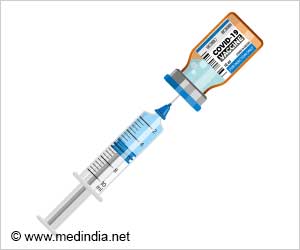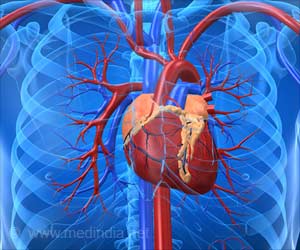
Scientists have identified more than 5,000 genetic variants that support the growth of specific types of cancer, and a potential target for treatment or prevention of these cancers.
The health impact of all potential genetic alterations in the ‘tumour protection’ gene, BAP1, was evaluated by researchers from the Wellcome Sanger Institute, in collaboration with The Institute of Cancer Research, London and the University of Cambridge. Their findings revealed that approximately 20% of these alterations were pathogenic, leading to a substantial rise in the likelihood of developing eye, lung lining, brain, skin, and kidney cancers (1✔ ✔Trusted Source
Saturation genome editing of BAP1 functionally classifies somatic and germline variants
).
The study findings, released today (5 July) in Nature Genetics, are freely accessible, to enable the physicians to use them immediately for patient diagnosis and selection of suitable treatment. It is worth noting that by evaluating all potential variations, the results are beneficial for individuals from various ethnic backgrounds, who have traditionally been underrepresented in genetic studies.
The team has also discovered a connection between specific disruptive BAP1 mutations and increased levels of Insulin-like growth factor (IGF-1), a hormone and growth factor. This finding paves the way for the development of novel medications that may block these detrimental effects, potentially halting or averting the advancement of particular cancers.
How a Tumor Suppressor Increases the Risk of Cancer?
The BAP1 protein is a powerful tumor suppressor within the body, providing protection against various types of cancer such as eye, lung lining, brain, skin, and kidney cancer. Disruptions in the protein due to inherited variants can elevate an individual’s lifetime risk of developing these cancers by approximately 50 percent, often manifesting during middle age.
Early identification of these variants through genetic testing can help in determining preventive actions, significantly boosting the efficacy of treatment, and enhancing the overall well-being of those impacted. However, up to this point, there has been a lack of clarity regarding the specific genetic changes in BAP1 that should be monitored, particularly in the case of rare variants that lead to its malfunction and promote the development of cancer.
The researchers at Sanger Institute, along with their partners at The Institute of Cancer Research and the University of Cambridge, conducted a comprehensive test on all 18,108 potential DNA changes in the BAP1 gene. This was achieved by artificially modifying the genetic code of human cells cultured in a laboratory setting, a method referred to as ‘saturation genome editing’. Their findings revealed that 5,665 of these changes had harmful effects, leading to the disruption of the protein’s protective functions. Further analysis of the UK Biobank data confirmed that individuals carrying these harmful BAP1 variants have a more than ten percent higher risk of developing cancer compared to the general population.
Advertisement
Alternate new therapy for cancer: Role of IGF-1
The team of researchers also found that individuals with harmful BAP1 mutations exhibit increased levels of IGF-1 in their bloodstream, a hormone associated with both cancer progression and brain growth. Even those without cancer displayed these heightened levels, indicating that IGF-1 might be a focal point for novel therapies aimed at slowing or preventing specific types of cancer. Further investigation revealed that harmful BAP1 mutations and heightened IGF-1 levels were correlated with worse outcomes in uveal melanoma patients, emphasizing the potential for IGF-1 inhibitors in cancer therapy.
It is important to highlight that the method identifies all potential BAP1 mutations across various populations, not just the ones commonly found in European medical records. This approach helps to tackle the lack of representation of non-European populations in genetic research.
Advertisement
The first author of the study at the Wellcome Sanger Institute, Dr Andrew Waters, said, “Previous approaches for studying how variants effect function in genes have been on a very small scale, or exclude important contexts that may contribute to how they behave. Our approach provides a true picture of gene behaviour, enabling larger and more complex studies of genetic variation. This opens up new possibilities for understanding how these changes drive disease.”
Professor Clare Turnbull, clinical lead of the study, Professor of Translational Cancer Genetics at The Institute of Cancer Research, London, and Consultant in Clinical Cancer Genetics at The Royal Marsden NHS Foundation, said, “This research could mean more accurate interpretation of genetic tests, earlier diagnoses and improved outcomes for patients and their families.”
A senior author of the study at the Wellcome Sanger Institute, Dr David Adams said, “We want to ensure that life-saving genetic insights are accessible and relevant to all people, regardless of their ancestry. Our aim is to apply this technique to a wider range of genes, potentially covering the entire human genome in the next decade with the Atlas of Variant Effects.”
In conclusion, the study demonstrates that the comprehensive evaluation of genetic variants enhances the knowledge of disease mechanisms, helps in diagnosis of cancer in patients, and would lead to potential personalized therapies for cancer.
Reference:
- Saturation genome editing of BAP1 functionally classifies somatic and germline variants – (https://www.nature.com/articles/s41588-024-01799-3)
Source-Medindia



